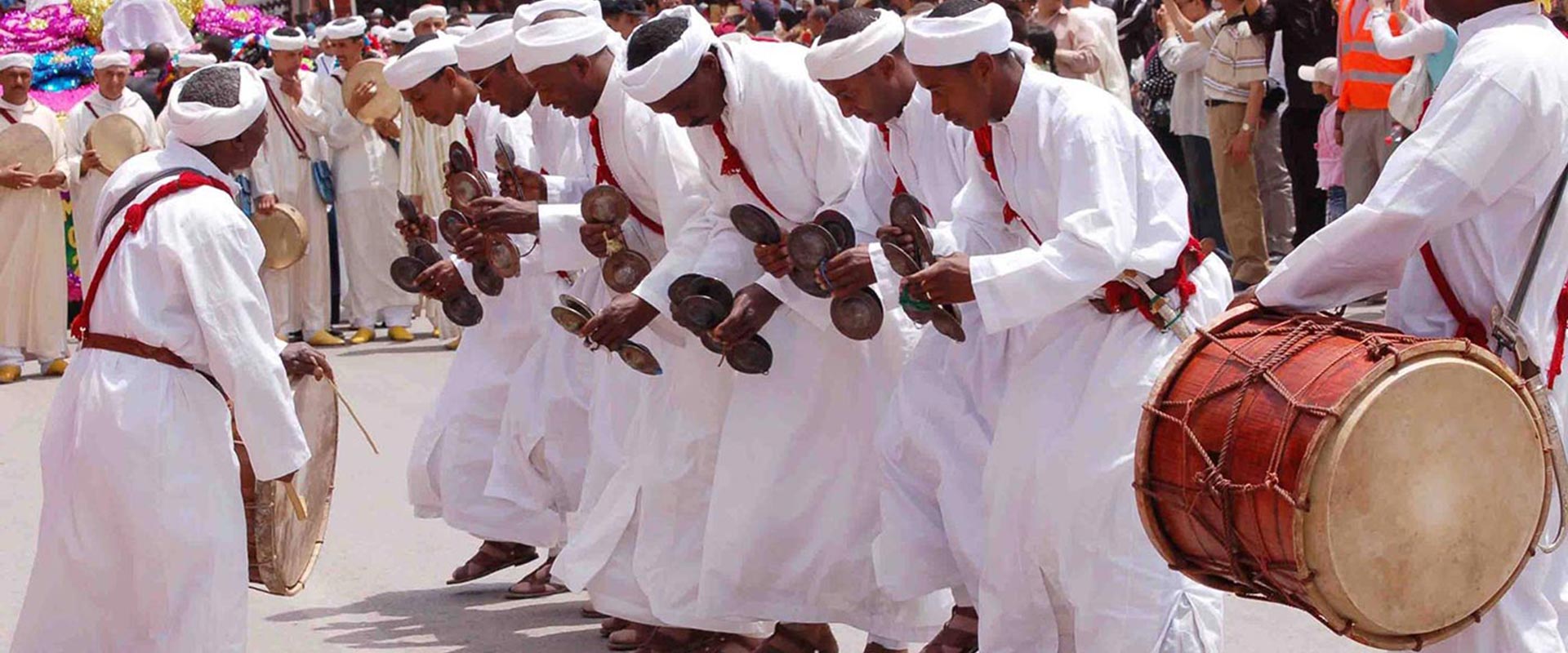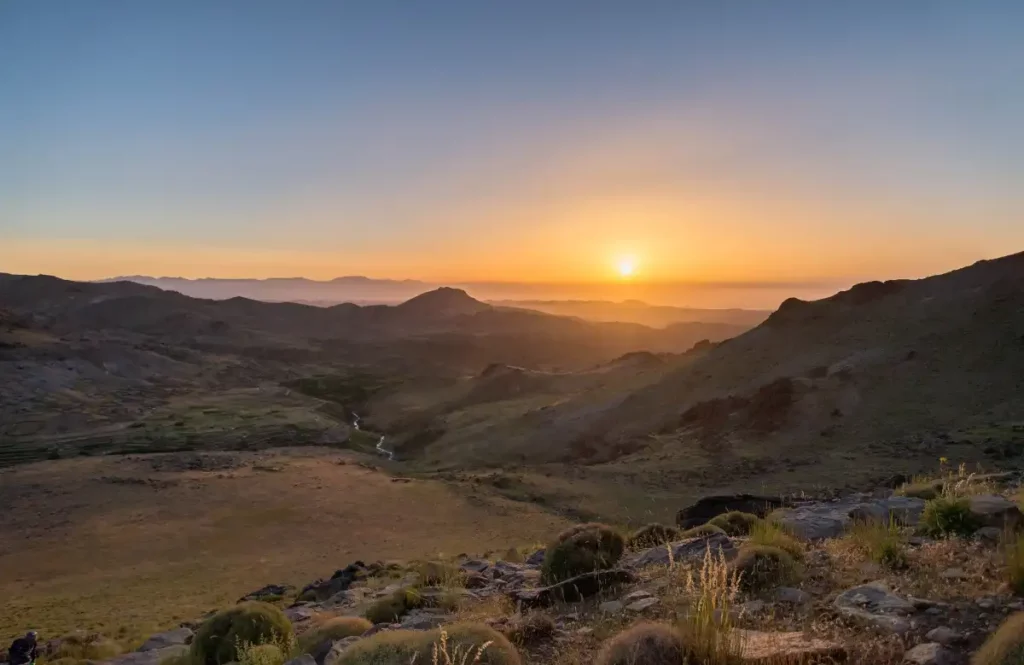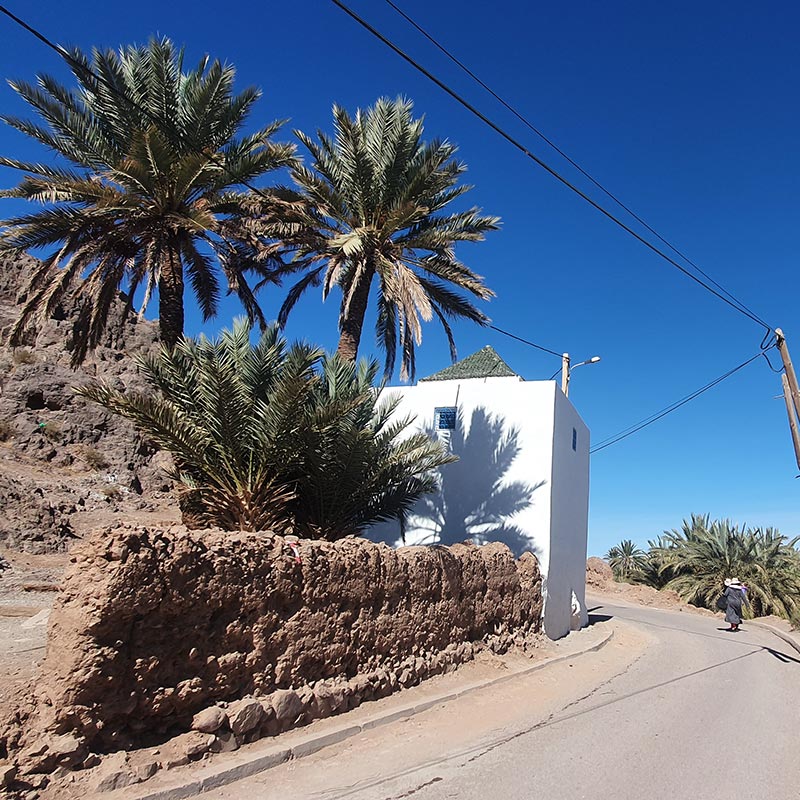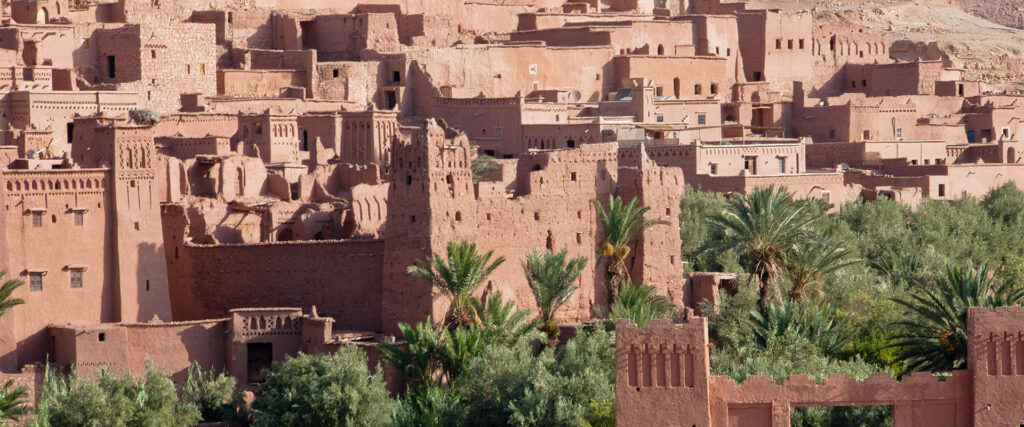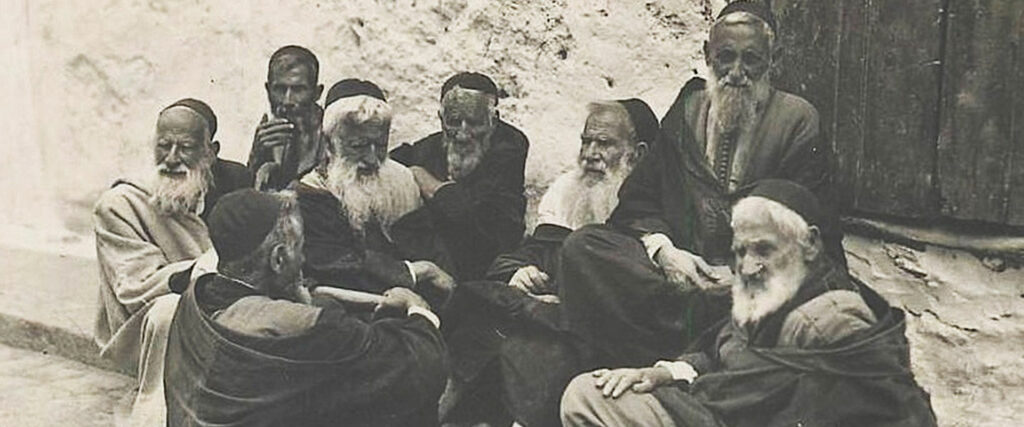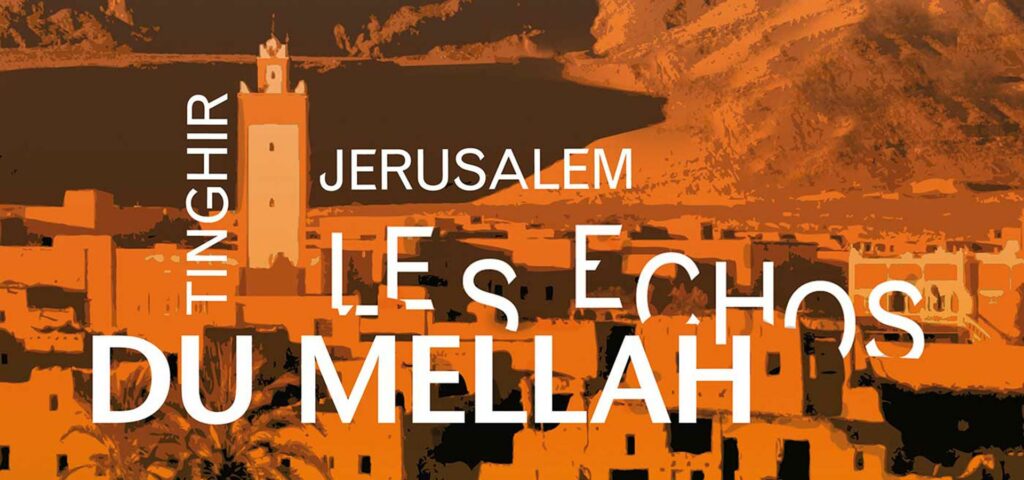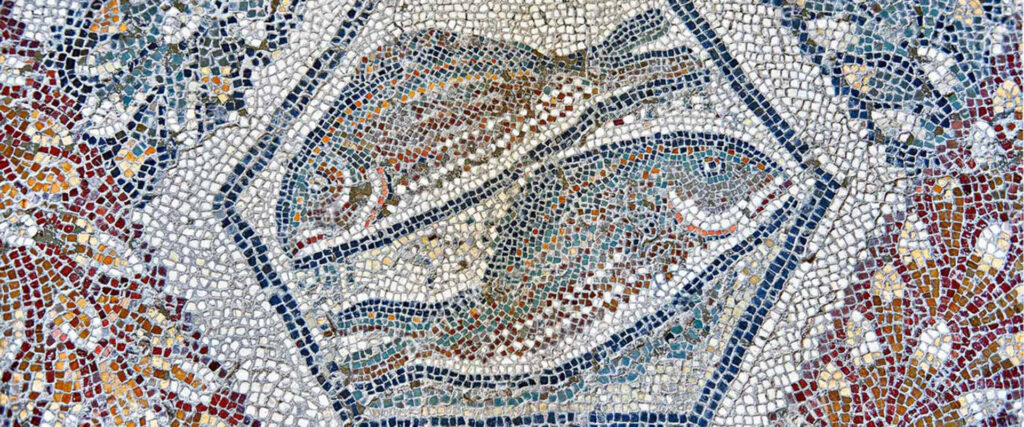You can read the article while listening to the Raïs chant.
In the mosaic of Morocco’s identity, the Gnawa hold a special place. Their presence not only enhances the country’s uniqueness but also deepens its soul. Known for their musical style, the Gnawa community in Morocco primarily carries echoes from sub-Saharan Africa. In this regard, they are the rightful heirs of the distant struggles of slavery that have long permeated the kingdom’s territories, reaching even its remotest corners. The Gnawa also embody an ancestral mystique blending healing arts with divine dialogue. Dispersed throughout Morocco, the Gnawa adhere to various traditions that set them apart from one another. One such tradition is connected to a mythical ancestor named Lalla Mimouna, revered by all as the defining figure of their identity. Near Tinghir, in the Todgha Valley, one of these Gnawa communities resides and regularly resonates with the hues of their heritage. M’bark El Haouzi oversees this community and has agreed to answer questions for southeast-morocco.com.
M’bark El Haouzi – I am the Amghar of the Gnawa of Todgha, and I have devoted my life to valorizing and safeguarding this culture, which was on the brink of disappearing in the early 1980s.
Indeed, there was a lack of interest in this culture, and the risk of its erasure was real. In 1994, while pursuing my bachelor’s degree in French Language and Literature, I wrote my thesis on “The Gnawa Festival – Performances and Theatrical Games in the Errachidia Region.” In 1992, during an annual festival in Igli, I asked some questions to the late Messaoud Oubelkhir. He was one of the best Gnawa in the South of Morocco and a true guardian of Gnawa memory and traditions. He was renowned for his performances and his specific style of play. Before answering me, he asked about the purpose of my questions. I told him that my intention was to conduct an academic study on Gnawa activities and traditions in the Southeast of Morocco. He then took my hand and said:
« Now that there is someone who will write and save our traditions from oblivion, I can die in peace. »
Messaoud Oubelkhir
I then promised him to dedicate myself to the preservation and valorization of the Gnawa heritage.
MEH – The arrival of the Gnawa in Morocco occurred in two main waves. The first took place during the reign of Ahmed Al-Mansour Dahbi. Born in 1549 in Fez and died in Marrakech in 1603, he was the 6th sultan of the Saadian dynasty. During his reign, which lasted from 1578 to 1603, he brought significant groups of black populations from the former Sudan – now Mali, Senegal, Niger, Mauritania, and Guinea. His objective was to have them work in sugar refineries such as those in Essaouira and Marrakech. At the end of his reign, these slaves revolted and destroyed the refineries before dispersing throughout the country.
Some of them ended up in service to maraboutic zaouias, while others served as chiefs of many rural tribes or alongside the Sultan’s representatives, the Caïds, who took them as domestic slaves.
All of them, scattered throughout rural Morocco, spoke Berber.
Etymology of the word Gnawa : according to Delafosse (1924), the Berber expression “akal-n-iguinaouen,” meaning “land of the Blacks,” gave rise to the words Guinea and Ghana, and subsequently to the word “gnaoua” due to phonetic similarity. Therefore, “gnaoua” would mean, by extension, black man or coming from the land of black men, i.e., sub-Saharan Africa. (Source: Wikipedia)
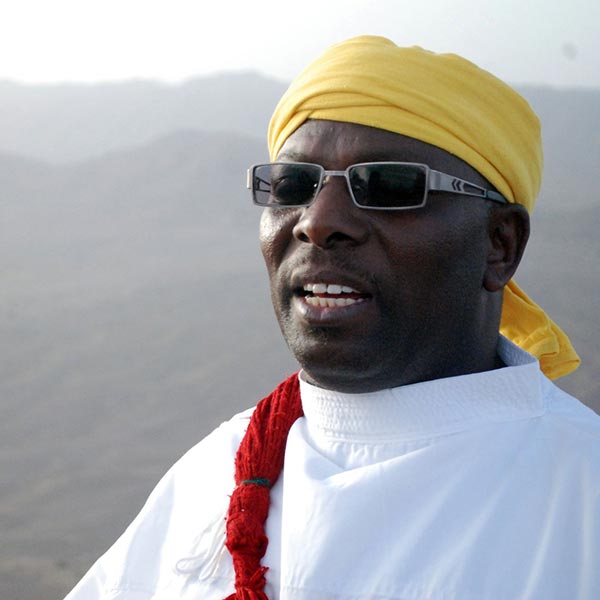
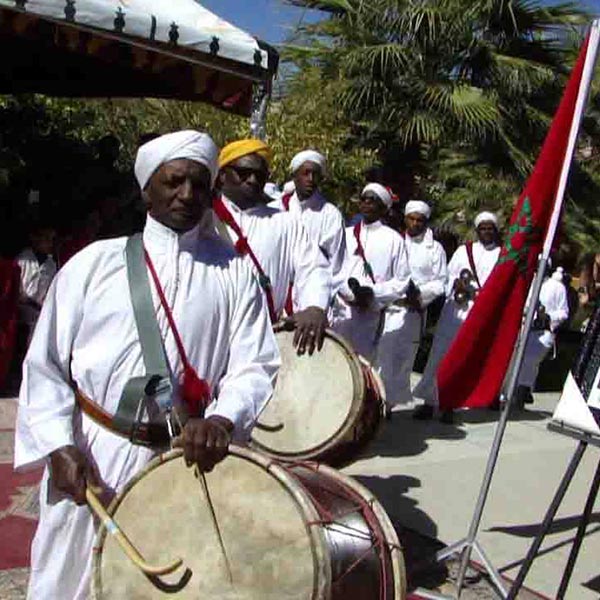
The Gnawa of the city and their trance culture.
A second wave brought the Gnawa to the city. They are called the Urban Gnawa because they arrived when the major cities of Morocco were being founded. They originated from Moulay Ismaïl’s royal guard and were called the Bukhara. They came with the caravans of Saharan trade at the end of the 18th century and throughout the 19th century.
They brought with them a music whose purpose is therapeutic. It’s the culture of trance. They are Arabic speakers.
However, it’s important not to forget that populations with black skin had already inhabited the Maghreb since antiquity. Many historians confirm their presence, particularly in the various oases of southeastern Morocco as peaceful cultivators of date palms and the land. They were called the Haratine.
The Haratins (in Berber isemghan, singular asemgh), sometimes called Black Moors, refer to black inhabitants of the Sahara, with various statuses depending on the regions. (Source: Wikipedia)
As for our Gnawa community, who arrived very early in the Southeast, we became linked with the Berber tribes of the Ait Atta, and we followed them wherever they went and settled.
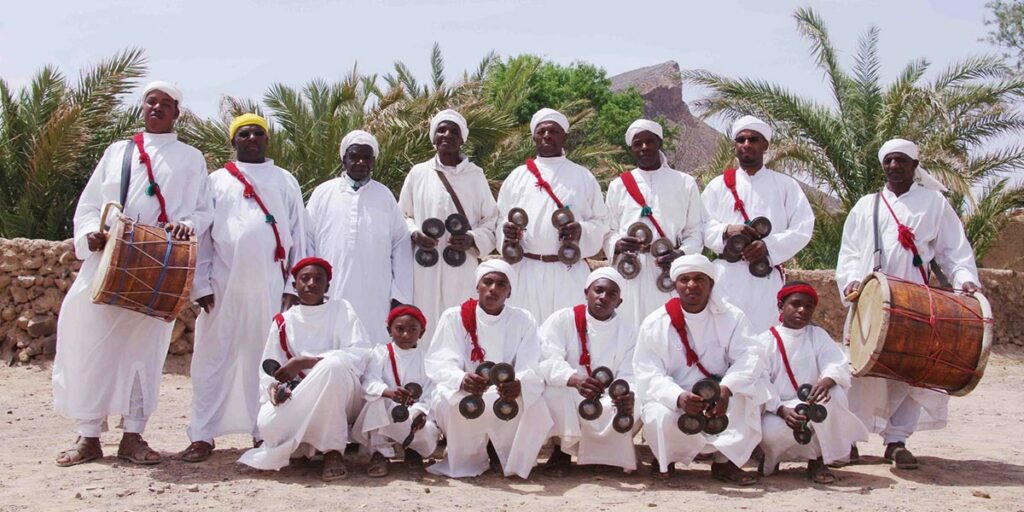
MEH –So our community became closely linked to the Ait Atta very early on. The Saghro Massif represents their ancestral land, the cradle of their confederation. We have always had good relations with them, but like any black-skinned person, our ancestors experienced slavery or servitude.
It’s worth noting the multitude of names used to refer to these black individuals, who indeed do not all have the same origin but who all have been victims in one way or another of slavery.
Two main appellations can be observed: the Ikabliyen and the Ismkhan, also known as Ignaoun. The latter term is given to blacks associated with noble families, present as domestic slaves. However, later on, it is used as a local designation, so gnawa – ignaoun – ismkhan and ismgan are terms with equivalent meanings but which differ according to regions.
Those referred to by the first appellation are marginalized and continue to maintain the status that was once reserved for them. Therefore, in Todgha, the terms Ikabliyen and Haratine still carry a very pejorative connotation, as they refer to black men whose mission is to work in the fields, in other words, to be slaves.
These relationships stem from the dual origin of Moroccans. Overall, they consist of white Berbers and black Haratines, descendants of former slaves uprooted from sub-Saharan Africa. This second category continues to be subjected to an inferior status and is, in fact, exploited by the first.
In response to this situation, we can observe a significant emigration of blacks outside the villages, either abroad or towards the cities of the country, where working conditions are better and more lucrative. However, no one has come to replace those who left, resulting in a loss for the local economy as villages have been drained of their workforce.
However, it would be wrong to believe that blacks suffer violence; they are exploited economically. It should also be noted that until very recent times, these individuals formed miserable human groupings and, left to themselves, did not receive the necessary assistance to remedy the afflictions that burdened them.
A proud Gnawa community of its origins
MEh – In fact, terms like Laâbid, Issamkhan, or Issamgan are always associated with the period of slavery and are given and used by white people to assert their superiority, exert power, and dominate over people of color, marginalizing them.
The perfect term is Ignawen (plural of the Amazigh term agnaw). This term is used to refer to black populations coming from distant lands to settle in the southern regions of Morocco. These populations spoke a language that the inhabitants of these regions did not understand. I can say that these racist appellations were the cause of the degradation of our traditions in the southeast regions until a recent time.
That said, nowadays, the Gnawa community no longer pays attention to these appellations because they are aware of the value of their heritage and are proud of their origin and identity.
MEH – The Gnawa of Sidna Bilal have been extensively studied and indeed are more widely known in the media. The fact that they live in large cities has likely played a role. Their appellation also explains their notoriety, as Sidna Bilal was the first muezzin of the Prophet of Islam.
Their music is part of the trance culture with therapeutic purposes. They use a three-stringed instrument with a low register. Their calendar is lunar, and their ritual, always nocturnal, takes place at the end of the month of Chaâbane because they believe that with the arrival of the sacred month of Ramadan, all djinns are chained.
This trance practice has attracted much interest from anthropology, and Moroccan society has quickly integrated them because trance already existed in the cultural background of Moroccan society, among the Aïssawa, Hmadcha, and Derkaoua.
To be Gnawa of Lalla Mimouna, from father to son
Among the Gnawa followers of Lalla Mimouna, one inherits the Gnawa tradition from father to son, so we are Gnawa families. Conversely, among the followers of Sidna Bilal, one can become Gnawa by undergoing the initiation process into therapeutic practices, which makes these Gnawa more accessible to study and integrate, as anyone can become Gnawa.
This is why this book constitutes an exceptional testimony allowing us to discover the heritage of the Gnawa of Lalla Mimouna, which until now has remained in the shadow of the Gnawa of Sidna Bilal.
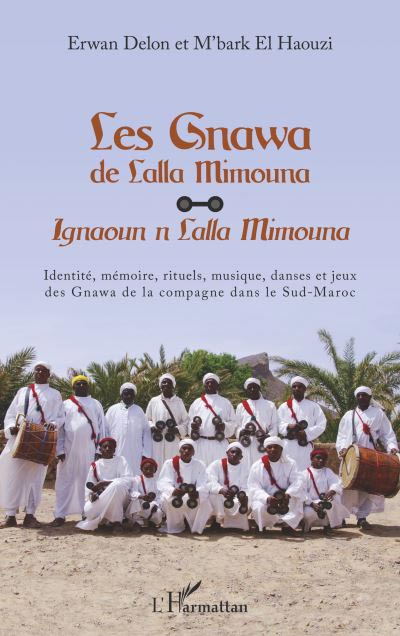
MEH – The Gnawa of the southeastern region of Morocco are called the followers of Lalla Mimouna or Gnawa of the Companion. They are named as such because they worship Lalla Mimouna, here called the Companion. She is an ancient African deity whom the Gnawa honor and engage with in all their activities. She is indeed the faithful and inseparable companion of the Gnawa, the one who comforts, heals, and accompanies the Gnawa throughout their entire lives.
This tradition is found in different regions of Morocco such as the Souss region, the North of Morocco, and even in Algeria.
The music of the Gnawa of the Companion is called Ganga in Berber. Regularly, groups go on begging tours, and all of them perform the pilgrimage to Lalla Mimouna every year. Our musical instruments are drums and castanets. There are two drum players who set the rhythm for the dancers. These dances and music are our heritage that we want to preserve intact.
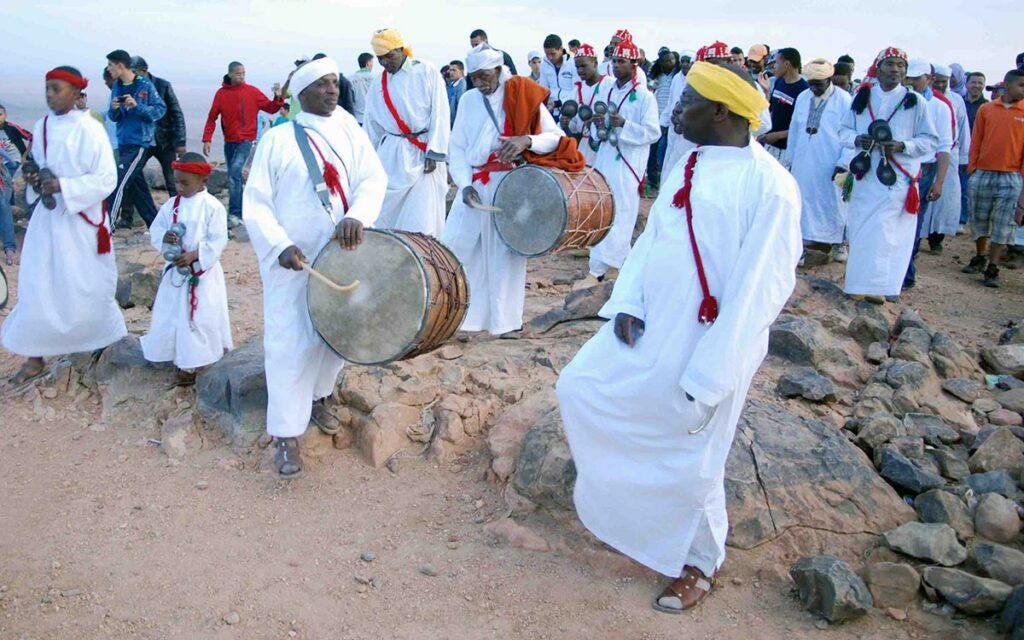
MEH – The tradition tells that Lalla Mimouna stayed on a mountain near the douar of Tamsermass, in the rural commune of M’cissi, Caïdat, Alnif Circle, and Tinghir Province in Southeast Morocco. Since then, a sanctuary has been erected to commemorate her presence.
The journey of the Gnawa to the sanctuary of Lalla Mimouna always takes place at the beginning of spring, specifically during the first week of the agricultural month of March. It is a ritual journey, a step that all believers must take. For them, it is a customary tradition inherited from their parents; but it is also a time for prayers and seeking forgiveness for sins and the blessing of their lives.
During the three days of the journey, sacredness and divinity are always present. The Gnawa try to relive the mythical time, the one their first ancestors deported from their homeland, would have remembered and longed for.
It should be noted that the Berber tribes of the Ait Atta have adopted the belief in Lalla Mimouna and participate in her pilgrimage.
MEH – Women are very attentive to visits from the Gnawa; they ask Lalla Mimouna for blessings for their children or fertility for themselves. Women often enter into trance during visits from the Gnawa. These trances thus have a therapeutic purpose as they allow the release of pent-up emotions.
On the other hand, the Gnawa tours constitute a special moment for the villagers, a celebration in which they participate, it’s the time for the spectacle. The Gnawa provide entertainment, but there is also the mystical aspect inherent in the veneration of a woman, Lalla Mimouna.
The villagers see the Gnawa as the bearers of blessings, and that’s why they participate in large numbers in the rituals offered.
For the preservation of the mystical symbolism
MEH – Indeed, we are witnessing a folklorization and commercialization of the Gnawa phenomenon. In this context, it’s easy to succumb to the allure of money while overlooking the mystical aspect.
Among the Gnawa of the Companion, we remain very attentive to this mystical symbolism. It is an essential point; the Gnawa venerate Lalla Mimouna with all the spiritual implications it entails, and it is also crucial to respect the tagnaouite values. These are the values we convey: decency between sexes and generations, mutual assistance in the community, and universal peace.
Furthermore, to valorize this heritage, it is essential to have the support of the authorities who must realize the fortune of having Gnawa in their region. Gnawa should be highlighted by involving them in cultural events and making them one of the cultural symbols of the region.
In these challenging times, it is more necessary than ever for policymakers to support our ancestral heritage that we keep alive from generation to generation.
To order the book “The Gnawa of Lalla Mimouna” from the publishing house L’Harmatan.
